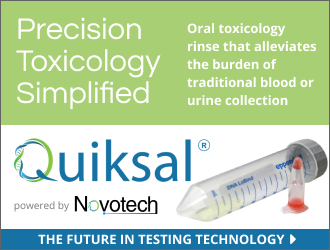
The Georgia Department of Natural Resources Wildlife Resources Division (WRD) has released it’s Fish Kill Report concerning the ammonia spill at Mount Vernon Mills in Trion on the Chattooga River.
The WRD said they were first notified of the kill by a call on June 28th. The caller stated he noticed more than 40 dead fish in the Chattooga River while fishing near the Mount Vernon Mills plant. He said there were dead Striped Bass, bream, carp, minnows, etc. He provided photos and videos of the dead fish.
WRD investigator Chris Smith Fisheries Biologist 2 stated in the Fish Kill Report, “Given the presence and location of dead fish within the affected river reach, the data collected and my field observations during the investigation, I can reasonably conclude that the fish kill was the result of the anhydrous ammonia spill. No other natural or pollution source was identified that would have caused the extensive fish mortality observed during our investigation.”
The investigation concluded 13,946 fish were killed.
Value of Fish Killed $57,944.24
WRD Investigative Costs $2,828.39 +
GRAND TOTAL COST $60,772.63

Ronald J. Beegle (Corporate Director of Environmental Affairs, stated in the Fish Kill report that an anhydrous ammonia spill occurred near storage tanks on the east side of the MVM facility on 6/26/24 at approximately 2200 hours. The spill incident continued until approximately 0200 hours on 6/27/24. Mr. Beegle said the spill was due to a pump malfunction on an Airgas, Inc. truck delivering anhydrous ammonia to the MVM facility. He stated that it took around 2 hours for the anhydrous ammonia to fully bleed-off from the delivery truck. In that time multiple fire departments responded and applied water to the leak. Will Jacobs estimated that 180,000 to 360,000 gallons of water was applied during the incident. This water and ammonia mixture spilled into an unnamed tributary of the Chattooga River.

Mr. Beegle said that during the spill incident, MVM staff recorded elevated pH values in the Chattooga River up to 10.8 for a 2-hour period. Since anhydrous ammonia is a basic chemical, this elevated pH level would suggest that the spilled anhydrous ammonia did enter the Chattooga River. Mr. Beegle went on to say that the D.O. and pH levels were back to “normal” levels the next morning (6/27/24), both near the site of the spill and downstream at Penn Bridge Road crossing over the Chattooga River. This was consistent with pH levels collected by WRD personnel on 6/28/24 at all three water chemistry sites. Mr. Beegle stated that they observed no dead fish at any point. According to the Material Safety Data Sheet (MSDS), anhydrous ammonia is acutely toxic to fish.
{Acute toxicity refers to adverse effects that occur within a short time frame after exposure to a substance, usually within 24 hours but up to 14 days.}
WRD staff observed the first dead fish just downstream of the unnamed tributary where runoff from the incident location entered the Chattooga River. Live fish and no dead fish were observed in the Chattooga River upstream of the confluence with this unnamed tributary. Likewise, live fish and no dead fish were observed by WRD staff in the Chattooga River at the Penn Bridge Road crossing. It was determined the fish kill began at the Fourth Street Bridge in Trion, Georgia and extended 2.38 miles downstream to a location just upstream of Penn Bridge Road crossing. WRD investigators noted that dead fish in the upper extent of the fish kill zone tended to be distributed on the left river bank (looking downstream) of the Chattooga River downstream of the unnamed tributary, consistent with the anhydrous ammonia entering the Chattooga River on the left bank. The fish kill was characterized as “severe” and affected both game and non-game fish species, including many large Striped Bass. Based on their state of decay, the fish appeared to have been dead for at least 24 hours. Basic water chemistry measurements taken during our field investigation were satisfactory for fish survival, but these data were collected almost 48 hours after the incident occurred.





Read the Fish Kill Report here: Loading...















Willie Marsh
July 9, 2024 at 7:04 am
Accidents can happen at any time but the trucker failed to monitor his tanker as he should be should have noticed it was taking longer than it should have.I know because I am a retired tanker driver myself.My option Airgas should be held accountable.
Walter
July 15, 2024 at 2:19 pm
No containment burms or basins?
Airgas should pay all damages and costs to prevent spills.
They should also pay for a comprehensive assessment of all possible spill sites along the river and it’s tributaries!